As college offenses become more and more pass-heavy, we might be waiting a long time before we see another non-quarterback win the Heisman Trophy.
To win one of these bad boys, a quarterback is going to have to put up supreme volume stats. Heisman voters haven’t red-pilled down the analytics path just yet, and the problem is that not all yards are created equal. A throw on a slant route within the context of a run-pass option (RPO) is a lot different than a slant route thrown within the context of a quick game, two- or three-receiver combination. And the simple fact is that the quarterbacks who get those RPO plays called for them will have an easier time piling on the yardage than those who reside in more purist passing offenses.
With the 2020 college football season mere weeks away, we’re going to rank the top 14 Heisman Trophy contenders at quarterback based on how much their offensive scheme can set them up for success. The list originally included 15 players, but I ended up leaving Jamie Newman off because (a.) We still don’t know if he will be the starter with USC transfer J.T. Daniels coming in and (b.) We also don’t know what the offense will look like under Todd Monken.
What we'll look at
Run/pass rate — This is pretty self-explanatory. The less you hand the ball off, the better chance you have of putting up passing yards. Playing on a team that likes to pass the ball is good for your chances.
RPO rate — Whether you see an off cornerback and throw the ball to your receiver for an easy completion or choose to hand the ball off if the passing lane isn't there, running an RPO-heavy offense still seems easier than …
Quick-game rate — … Reading one or two defenders and then not having the “opt-out” option of handing to the running back. High RPO rates are good; high quick-game rates are bad.
Non-RPO-screen rate — Is it fair that for the other quarterbacks that Trevor Lawrence gets to throw screen passes to Travis Etienne, the No. 1 graded running back on screen passes? No, it’s not. That’s why being a big screen-pass team is good for this exercise.
Play-action rate — Forgive me if you’ve heard this before, but play action works. It's much easier to hit that 75-yard post route when the safety decides he’s going to be a hero and play linebacker for a play while the receiver runs behind him — the higher, the better here.
Percentage of plays with five pass-protectors — Releasing all your running backs and tight ends on a given play is great in theory, but it might only work if you have a Joe Burrow or a Patrick Mahomes. LSU was able to be a big five-man protection team because, even if they allowed a free-rusher, Burrow was still almost always able to make a play. LSU allowed by far the most unblocked pressures when only using five men in protection, but Burrow graded out at 73.9 on these plays. Being low on this list is good.
Goal-to-go run/pass rate — The people who vote on the Heisman will inevitably get lost in the number of touchdowns thrown. Playcalling is the biggest culprit here. Most touchdowns are scored in the red zone, so if a team’s offensive coordinator calls a lot of passes in goal-to-go situations, that player is going to put up a lot of touchdown passes. Having a high pass rate is good here.
Middle of the field throw rate — The middle of the field is swimming with sharks, and finding spots to throw around linebackers and safeties is not easy. The team that lets its quarterback just throw outside the numbers to receivers who are better than the opposing team's defensive backs (I'm looking at you, Ohio State) is going to put up more completions. For this exercise, the middle of the field is an area 15 yards from each sideline. Being low is good in this respect.
It's important to note that I only looked at the stats when the specific quarterback was on the field. For example, Tua Tagovailoa's numbers won't be creeping into Mac Jones' numbers here.
I used these stats to rank the quarterbacks 1 through 14 for each category; I then added up those numbers for each passer. The lowest total number represents the cushiest offense to play in.
[Editors Note: PFF’s customizable NFL Mock Draft Simulator allows you to be the GM of any NFL team and is now updated with a select group of 2021 prospects]
14. Myles Brennan, LSU — 80 points
There’s no doubt that the LSU offense will change to insulate new quarterback Myles Brennan, but this ranking shows how incredible Joe Burrow’s season really was last year. While they did throw the ball a lot, they didn’t help their quarterback with easy throws. Brennan will have a tough time trying to replicate Burrow's elite execution — Burrow dropped back time and time again, made the right reads, and then delivered an accurate ball as well as any quarterback in college football history.
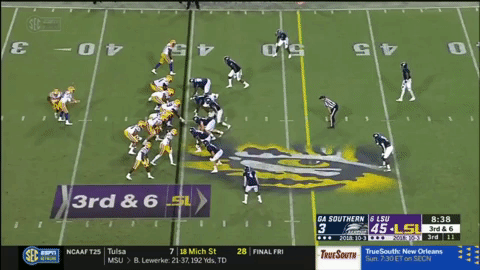
T-12. Kellen Mond, Texas A&M — 71 points
Staying true to the “pro-style” moniker the media gave it like a hundred years ago, Jimbo Fisher’s offense doesn't help the quarterback that much. Fisher forces his quarterback to drop back, throw a completion on a dig route, and stop complaining. The good news is that Kellen Mond is now entering his 13th year (give or take a decade) in Jimbo’s system. I’ve enjoyed what I’ve seen out of Mond in the dropback game, but he could just do with a few more of the “easier” plays now and again.

T-12. K.J. Costello, Mississippi State — 71 points (using Anthony Gordon’s 2019 Washington State season as a proxy)
Costello's issue will be the volume of throws he’s forced to make in Mike Leach’s pure Air Raid system. And while the team does throw a ton of screen passes, dropping back over 700 times in a season is going to produce a lot of incompletions — and the voters don’t like that. Even with the gaudy volume stats, there was a big gap between Leach quarterbacks getting into the top five of Heisman voting until Gardner Minshew did it in 2018. In fact, the last quarterback before Minshew to do that was …

11. Kedon Slovis, USC — 69 points
… Graham Harrell, USC’s offensive coordinator. I’m very high on Slovis because he was able to produce in this type of offense at such an incredible level as a true freshman. Slovis has a chance to be 2020’s Joe Burrow because of his insane accuracy — only Burrow threw a higher percentage of accurate throws beyond the line of scrimmage than Slovis, 69.8% to 65.9%. They also threw the highest percentage of quick-game in the sample, at almost a quarter of their pass snaps.
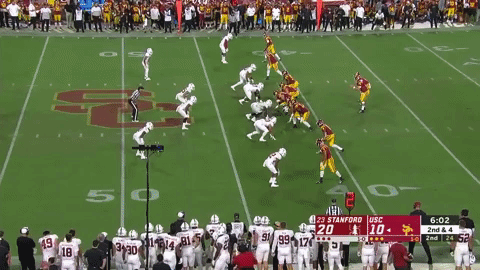
10. Justin Fields, Ohio State — 64 points
While their dropback passing game might not be very complicated — as evidenced by Fields only throwing 20% of his passes to the middle of the field (hello 10-yard hooks every play) — the Buckeyes do force Fields to at least do those dropbacks on the majority of their passing snaps. The limited number of RPOs and screens means that Fields has to find receivers himself. The problem, however, might be how often he throws the ball — he only threw it on 54% of his snaps in 2019, second-to-last in the sample.

9. Trevor Lawrence, Clemson — 62 points
In regard to saving my mentions from the Ohio State and Clemson fanbases, I am very happy that these two offenses ranked next to one another. Clemson finished ninth in quick-game passes last year, which makes sense given how good Lawrence is as a quarterback. He can handle all those speed-outs that he throws on a rope to the other side of the universe. He doesn’t have the goal-to-go pass rate to fatten up his touchdown total, but they throw a lot of screens. And as we noted, most of those are thrown to Travis Etienne, who is, to put it mildly, very good.
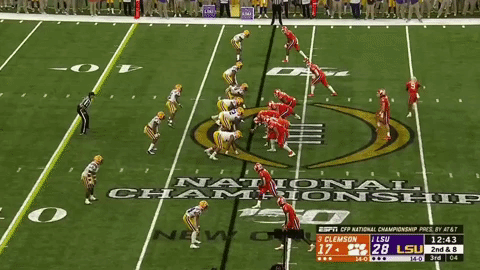
8. Brock Purdy, Iowa State — 60 points
You could get good money betting on Purdy to win the Heisman in 2020. The Cyclones throw the ball a lot, and there is a ton of play action that will help him hit the deep passes. They also don’t burden Purdy with any of that nonsense quick-game stuff — only 7% of his throws were made up of those asinine double slants or slant-flats or stick stuff that should be abolished. The play-action passes allow him to target the middle of the field a bit more than other teams, too.
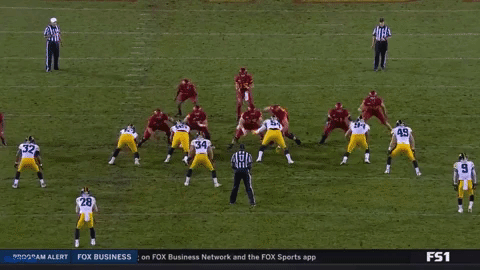
7. Mac Jones, Alabama — 59 points
Jones plays in the offense with the highest big-play potential, given the athletes around him and the way Steve Sarkisian’s “gimmick” offense works. If it’s not an RPO or a screen pass, Jones is throwing a post route off play action over an innocent linebacker's head. The speed on this team is unreal. The only reason Jones ranks seventh here is that the team ran it at the highest rate in this sample when Jones was in the game.

6. D’Eriq King, Miami — 58 points (using Shane Buechele’s 2019 SMU season as a proxy)
King has already played in the most user-friendly offense in college football (Houston in 2018), where he put up the second-best passing grade in the NCAA that year. Now he gets Rhett Lashlee, who helped Shane Buechele put up big numbers a season ago in Dallas. A ton of RPOs will help set the floor for King. Lashlee also protected Buchele with his pass-protection schemes, which King will welcome, given that he spent his 2018 season living off heavy protections and deep shots.

5. Kyle Trask, Florida — 52 points
Dan Mullen & Co. did all they could to make Mr. He11sman pop in 2019, and Trask responded with a passing grade of 66.4. They threw the ball a lot and gave him all sorts of bonuses, such as allowing him to throw the ball in goal-to-go situations and letting him throw a lot of play-action and screen passes. Hopefully he can improve in his second year as a starter because this offense sets up nicely for him to stat-pad a little bit.
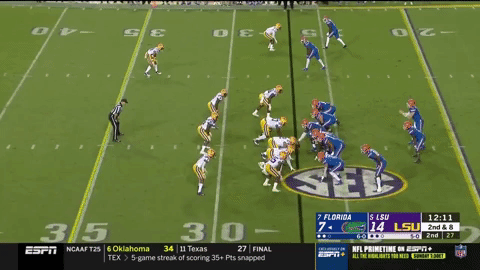
T-3. Sam Howell, North Carolina — 50 points
Howell put together an impressive true freshman season under the watchful gaze of RPO legend and Tar Hell offensive coordinator Phil Longo. Howell's 83.3 passing grade paired well with his 30 big-time throws and his 73.4% adjusted completion percentage. North Carolina ran the most RPOs in the Power 5 last season, with Howell adding 83 completions for 1,046 yards on those plays. There are very few quick-game dropbacks to speak of, and there are even fewer five-man-protection plays — it’s a cushy offense, and Howell is very good.
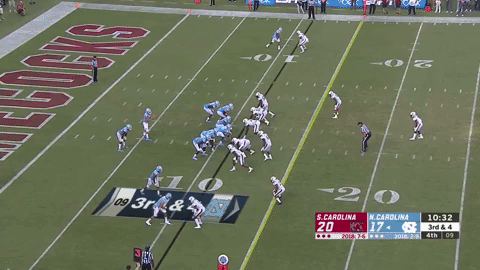
T-3. Bo Nix, Auburn — 50 points
Bo Nix faces the same problem Kyle Trask does: He just wasn't that good last year. Nix earned a grade of 64.4 last year but gets the benefit of the doubt, given that it was his true freshman season. And we would assume that the 2019 SEC Freshman of the year will make marked improvements in Year 2. The Auburn passing offense is simple, as evidenced by Nix’s lack of throws to the middle of the field (26% of the time). They also run a ton of screens and RPOs.

2. Ian Book, Notre Dame — 48 points
Brian Kelly may seem to yell at his starting quarterback a lot, but he does support his guys with a nice little offense. The main components that lift Book this high are his lack of throws to the middle of the field (only 33% of the time) and him throwing 60% of the time on goal-to-go situations. Book is also a solid player, so if Notre Dame can find some teams to play against this season, the senior signal-caller could be a good bet.

1. Spencer Rattler, Oklahoma — 46 points
This one should be obvious, given that Oklahoma and Lincoln Riley have produced one finalist and two Heisman winners over the past three seasons. The way Riley can create open receivers for his quarterback is second to none. The offense will look different because Rattler is not the load that Jalen Hurts was, but you wouldn’t put it past Riley to craft something nice for Rattler.
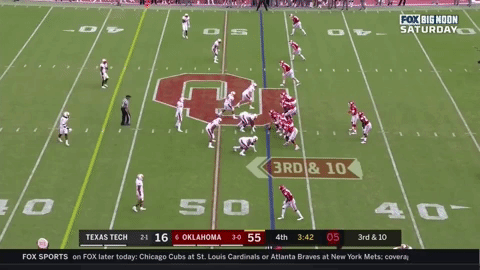
There you have it, folks. An Oklahoma quarterback is going to win another Heisman. So, to close out, here are all the rankings in full:
| Rank | Player | Run/pass rate | RPO rate | Play-action rate | Screen rate | Quick-game rate | Five-man protection rate | Goal-to-go rank | Middle of field passing rank | Total |
| 1 | Spencer Rattler | 9 | 10 | 3 | 12 | 1 | 2 | 6 | 3 | 46 |
| 2 | Ian Book | 7 | 6 | 10 | 7 | 7 | 4 | 3 | 4 | 48 |
| 3 | Bo Nix | 12 | 3 | 6 | 3 | 5 | 7 | 12 | 2 | 50 |
| 3 | Sam Howell | 11 | 1 | 1 | 8 | 11 | 1 | 7 | 10 | 50 |
| 5 | Kyle Trask | 2 | 9 | 4 | 5 | 8 | 12 | 4 | 8 | 52 |
| 6 | D'Eriq King | 10 | 2 | 8 | 6 | 10 | 6 | 11 | 5 | 58 |
| 7 | Mac Jones | 14 | 5 | 2 | 1 | 2 | 9 | 13 | 13 | 59 |
| 8 | Brock Purdy | 4 | 7 | 5 | 13 | 3 | 8 | 8 | 12 | 60 |
| 9 | Trevor Lawrence | 8 | 4 | 9 | 4 | 9 | 5 | 14 | 9 | 62 |
| 10 | Justin Fields | 13 | 13 | 7 | 14 | 4 | 3 | 9 | 1 | 64 |
| 11 | Kyle Slovis | 5 | 8 | 13 | 9 | 14 | 11 | 2 | 7 | 69 |
| 12 | Kellen Mond | 6 | 11 | 12 | 10 | 6 | 10 | 10 | 6 | 71 |
| 12 | K.J. Costello | 1 | 14 | 14 | 2 | 12 | 13 | 1 | 14 | 71 |
| 13 | Myles Brennan | 3 | 12 | 11 | 11 | 13 | 14 | 5 | 11 | 80 |
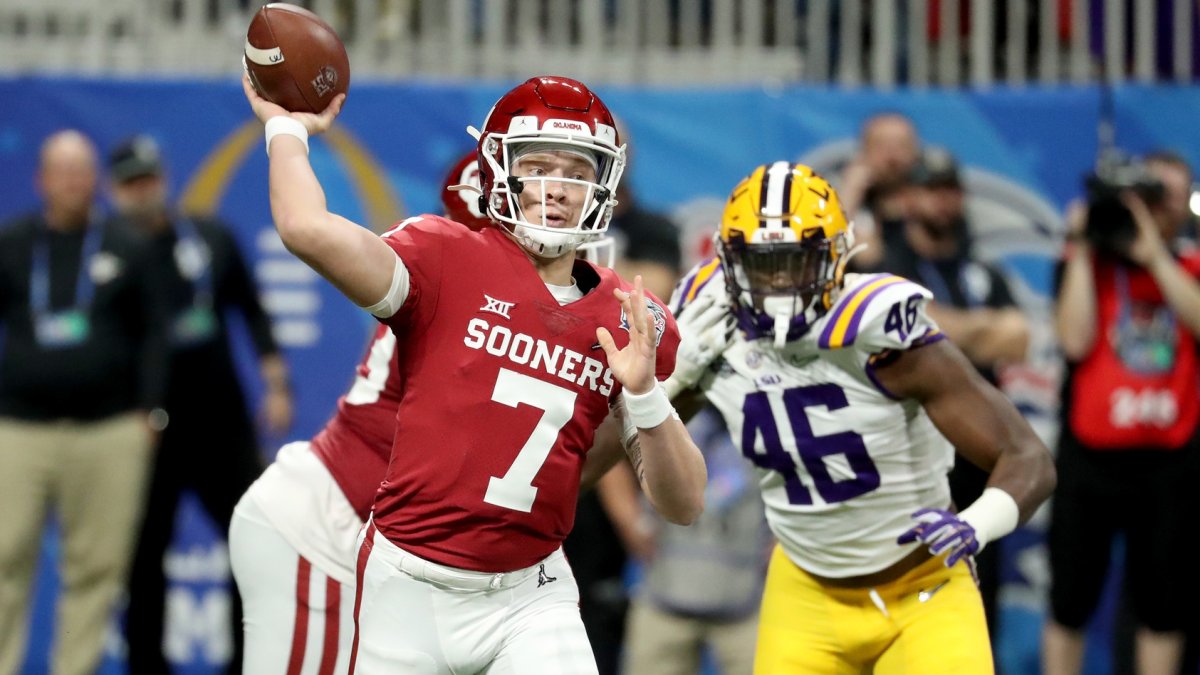


 © 2025 PFF - all rights reserved.
© 2025 PFF - all rights reserved.